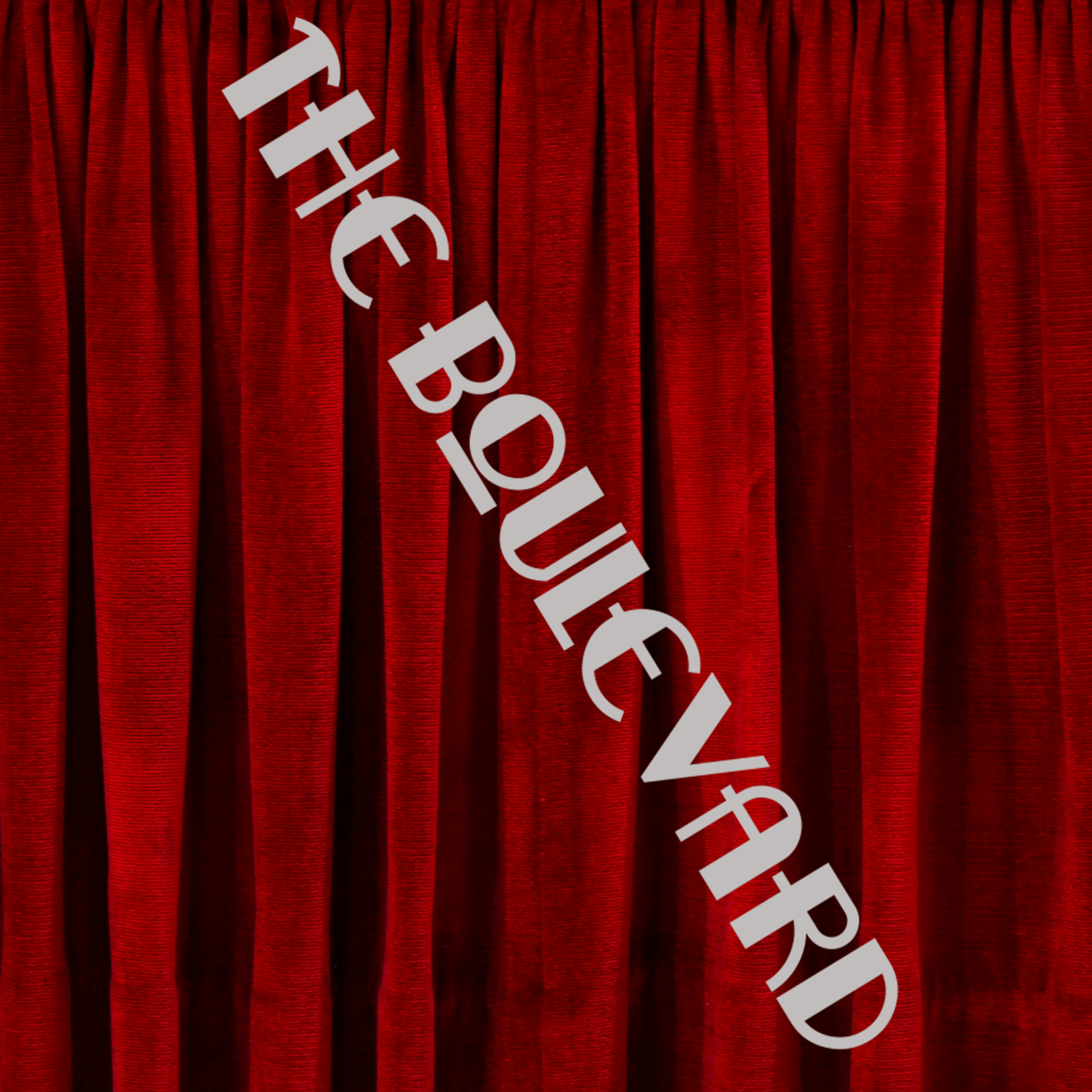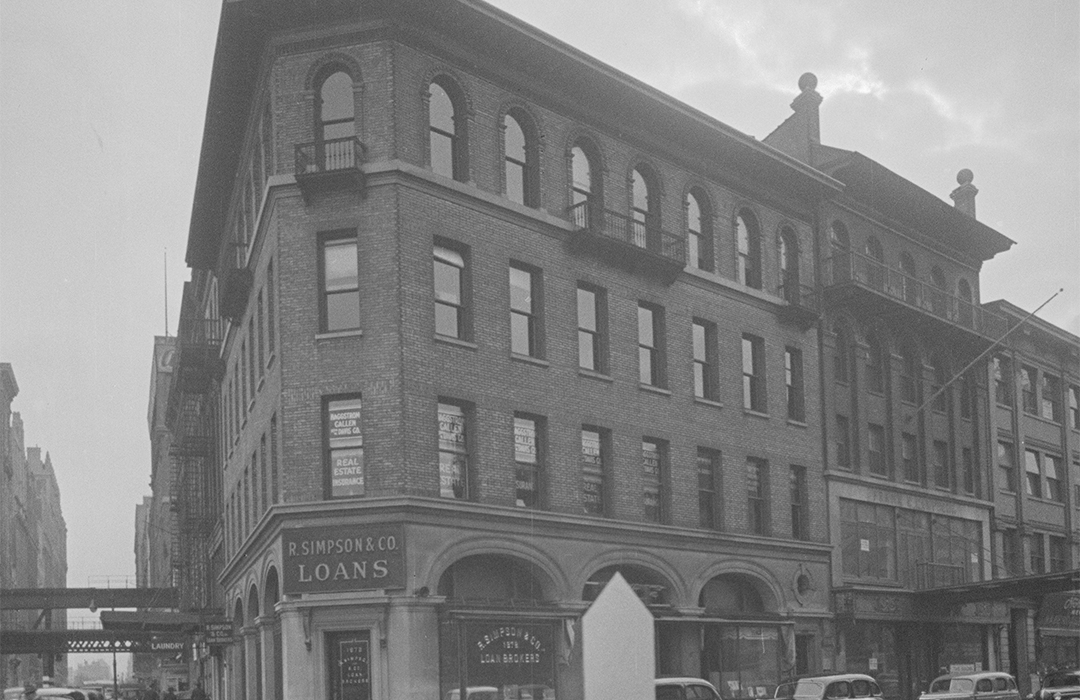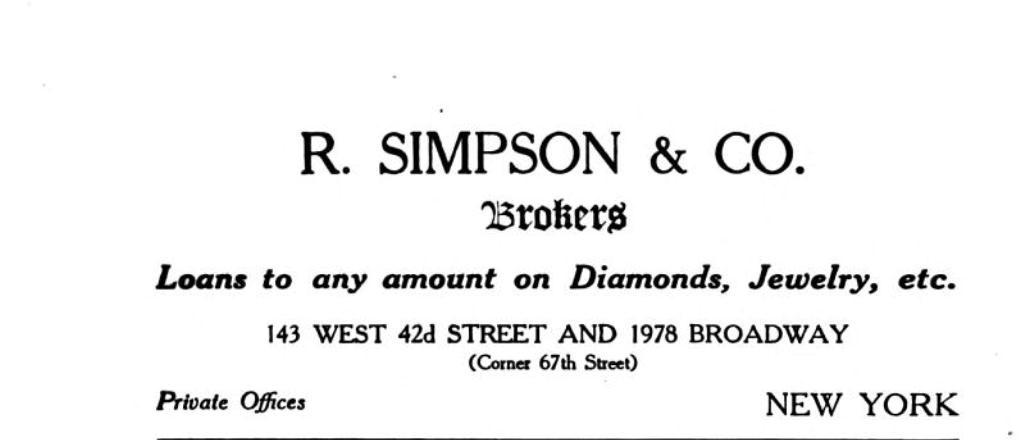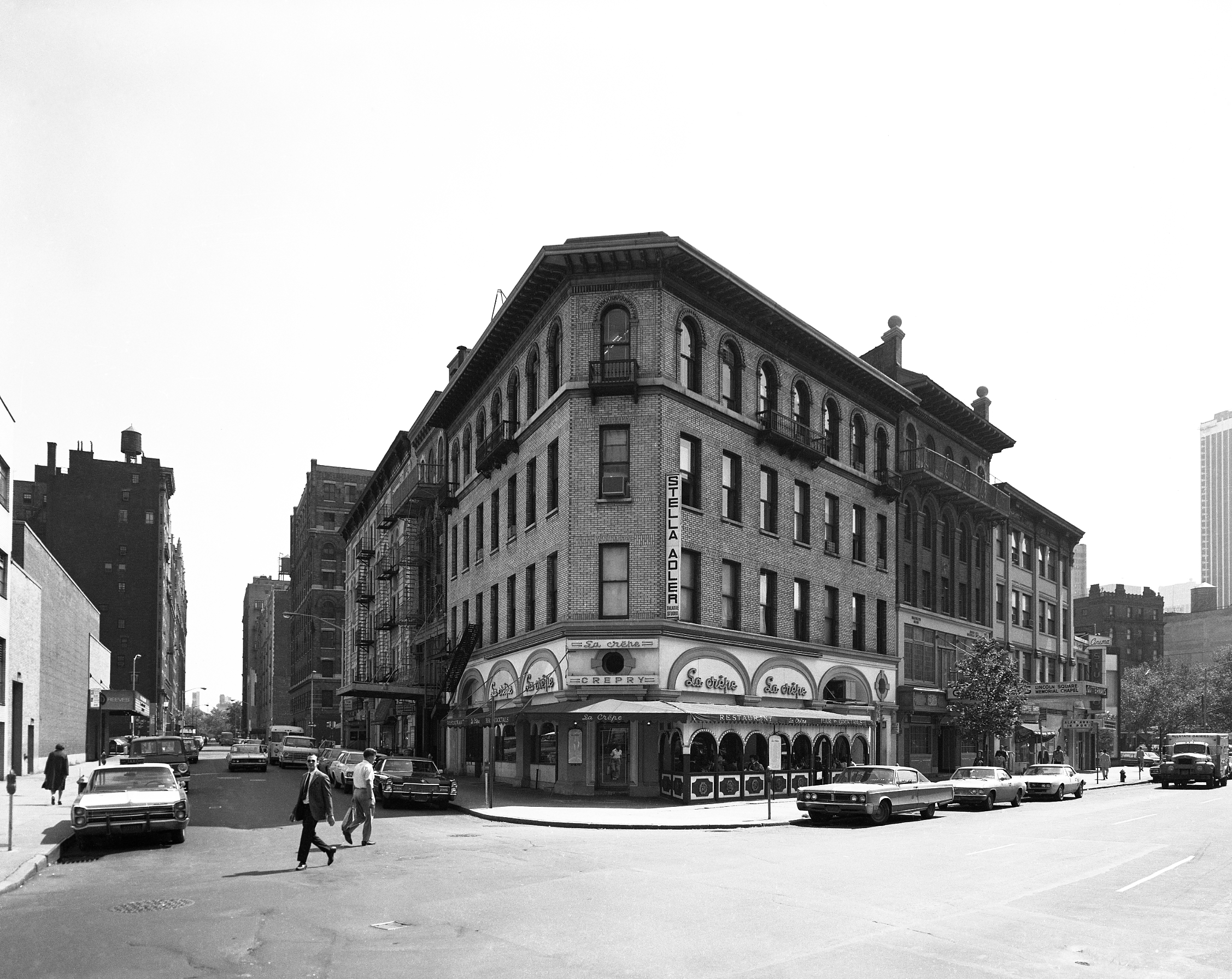
1974-1978 Broadway – The R. Simpson & Co. Building
by Tom Miller
The pawnshop that Thomas Simpson ran at 143 West 42nd Street at the turn of the 20th century had been founded by his uncle, Robert Simpson, in 1827. Business was such that by 1906 Simpson acquired the property on the southeast corner of Broadway and 67th Street for a branch office. Simpson hired architect Frederick G. Frost to design a store-and-office building on the site. His plans, filed that December, projected the construction costs of the four-story structure at $50,000—about $1.75 million in 2024.
Completed in 1907, the tripartite design featured a handsome arcaded ground floor and fully-arched openings at the fourth. To adapt his building to the severely angled corner of the irregular plot, Frost chamfered the corner, where the entrance to R. Simpson & Co. at 1978 Broadway was located. A second ground-floor space was located to the south, near the doorway to the upstairs offices at 1974 Broadway.
Simpson & Co. advertised “Loans to any amount on Diamonds, Jewelry, Etc.” Like every other pawnshop, a large percentage of the items pawned were never reclaimed, necessitating occasional auctions. Such was the case on June 16, 1908, when an auction of “diamonds, jewelry, etc.” was held.
To adapt his building to the severely angled corner of the irregular plot, Frost chamfered the corner
The other ground floor space was leased to Hopewell Brothers, automotive accessories. Upper Broadway was known as Automobile Row, so the location was perfect for the firm. Based in Newton, Massachusetts, it offered products like “trouble finders” and “automobile soaps.”
In the meantime, the upper-floor offices were leased to various tenants. William and Sophie B. Kuchenmeister were Christian Science practitioners who saw patients in their offices. William was on site from 10 a.m. to noon and Sophie from 2 to 4 p.m. in the afternoon.
Importantly, Samuel H. Martin ran his real estate office from an upstairs office. He managed the building and was responsible for leasing the offices and ground floor commercial space.
In 1911, Martin leased a large office to a highly visible tenant. That April, The Auk, A Quarterly Journal of Ornithology reported that the National Association of Audubon Societies had moved into a large space. “Here much more commodious rooms have been secured at less cost, and at a point convenient of access from any part of the city,” said the article. The group would remain in the building into the Great Depression. It was joined in the building that year by the National Association of Game and Fish Wardens.
Hopewell Brothers was replaced by the Hess-Bright Manufacturing Company around 1911. The firm made “ball bearings that endure” and would remain in the space until 1921.
Samuel H. Martin encountered an unusual complaint in 1919. He had leased the house at 8 West 65th Street to Mrs. Gladys Benson. Before signing the lease, Mrs. Benson was made aware that its owner, Dr. Walter K. Wilkins, had murdered his wife in the house, and then committed suicide in jail. That did not seem to bother her until the rent was increased in the summer of 1919. When she refused to pay the increase, she was ordered to vacate the premises. Gladys Benson complained to the Mayor’s Committee on Rent Profiteering. The Evening World reported on August 11, “According to Mrs. Benson she is compelled to raise an umbrella to keep off the moisture which drops from the ceiling. Her chief complaint was about the ghost of the doctor who killed himself in jail while awaiting sentence for wife-murder.” The article said that Martin “has been summoned to appear and give his side of the story.”
Other tenants in the upper floors that year were the New York Bird and Tree Club, and the American Food Control Systems, Inc. That latter supplied accounts and auditors to hotels and restaurants.
With World War I ended, the New York Bird and Tree Club sought to help repair the devastation in France. On April 13, 1919, The Sun reported, “Great success has attended the New York Bird and Tree Club of this city in its efforts to obtain money for memorial fruit trees to replant the destroyed orchards in France.” In an arrangement with the French Government, New Yorkers’ donations went to planting trees. “For each dollar subscribed for the purchase and planting of a fruit tree,” said the article, “the donor will receive an illuminated card with the poem by Sergeant Joyce Kilmer entitled ‘Trees.’” At the time of the article, the club was responsible for the planting of 12,000 trees.
“…Her chief complaint was about the ghost of the doctor who killed himself in jail while awaiting sentence for wife-murder.”
In the summer of 1921, Theodore M. Tobant, Jr. opened a brokerage office, Tafre Company, here. The young man had recently been a receiving teller with the Title Guarantee & Trust Co. In July, he took his vacation time to get married and go on his honeymoon. Just before he left, on July 21, auditors went over the cash in the vault before the trust company moved to a new location. The Evening World reported, “There should have been $81,000 in the vault, but the count showed a trifle less than $66,000…Since then a watch has been kept upon all employees that had access to the safe.”
Rather than lie low with what the newspaper called Tobant’s “new prosperity,” he resigned and opened his brokerage office in the Simpson Building. His new career would be short. He was arrested on October 4, and charged with grand larceny.
That same year, the Hobson Oil Co., Inc. took over the former Hess-Bright space. By 1924 Jacob Kahn, a builder, and the Haggstrom-Callen real estate firm occupied offices upstairs.
The National Association of Audubon Societies had a similar neighbor by 1930 when the International Committee for Bird Preservation leased space here.
- Simpson & Co. left around 1948. A renovation completed the following year resulted in a single store on the ground floor, an embalming school on the second and third, and offices on the fourth. A new penthouse level held one apartment. The configuration lasted until 1971 when the embalming school was replaced by a dramatics school on the second floor and offices on the third.
The R. Simpson & Co. building was replaced in 1998 by a glass and brick mixed-use building.
Tom Miller is a social historian and blogger at daytoninmanhattan.blogspot.com
COMING SOON
Keep Exploring
Be a part of history!
Think Local First to support the businesses at 1974-1978 Broadway:




